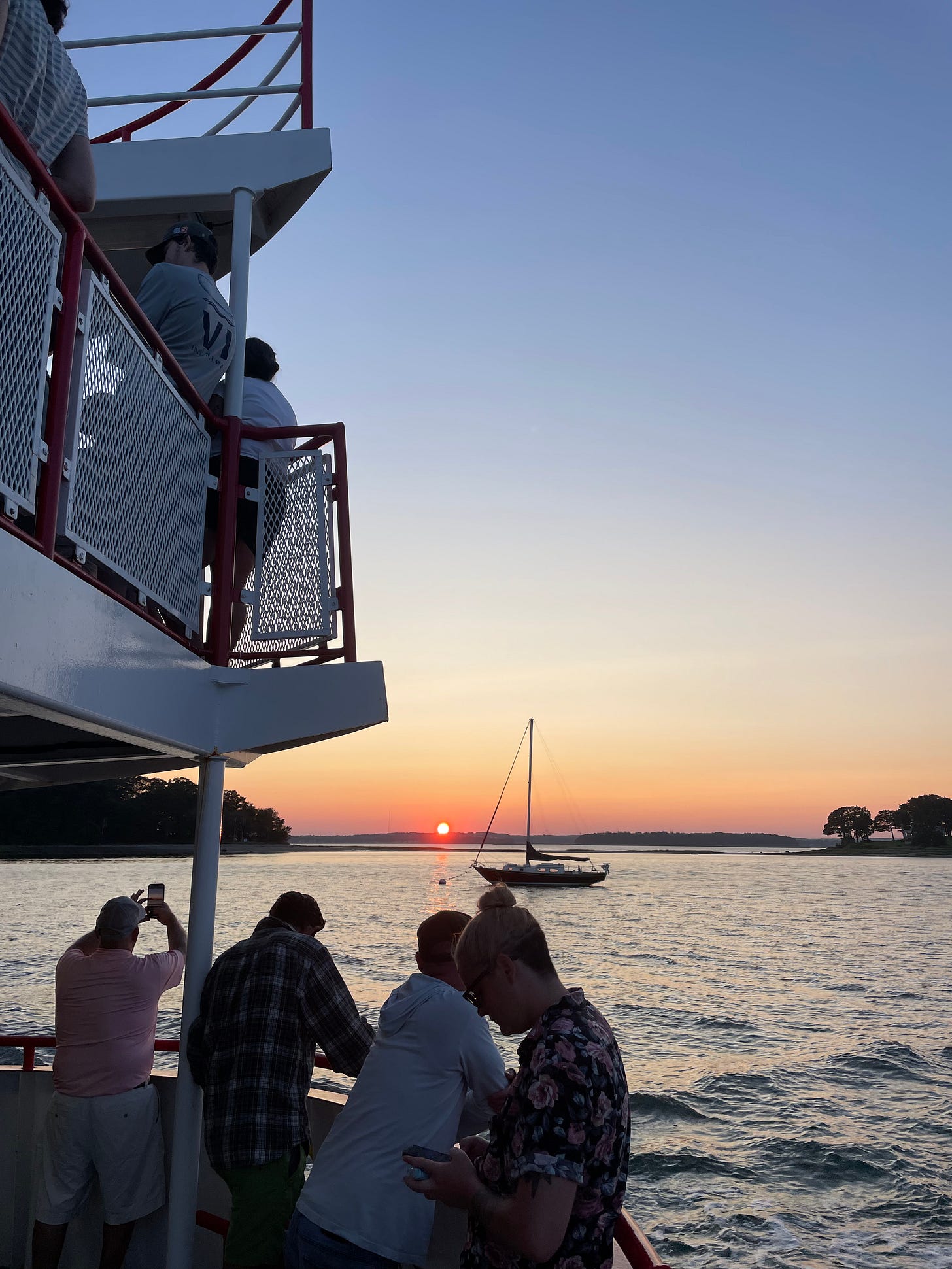Mel Andrel is a self taught artist, graphic designer and creative human being based in Portland, Maine.
I ~ ON CARING
As a self taught designer I acknowledge that finding information requires a lot of time, however, I think the beauty of being self taught is that one actively grows their career off of care and passion, applying skills from lived experiences and previous jobs. I studied anthropology in undergrad, and, prior to my role as a graphic designer, I have been employed as an educator, social worker, sales associate, desk assistant, manager, server, host, museum guide, technical support advisor, budtender, barista… and the list goes on.
A common denominator for leaving most of these jobs? “Caring too much.” If you have been told to stop caring about the little details or felt small when pointing out an issue you felt passionate about, you’re not alone and it’s okay.
No matter what role, I have always thought through every scenario, every detail, and seen things more holistically. What is the customer’s journey like from start to finish? How can I relate to my audience? What is the average demographic like? What music do they listen to? How can I adjust to meet their specific needs?
Applying my background to what I do now has allowed my design approach to be user-centered (I use the term user-centered because I think it is really cringy when corporations describe their services as human driven…) and i’m pretty proud of it!

After college, I had a brief stint in D.C. where I taught students in a civic education program. Each week high schoolers from all over the U.S would mix together for programming. I think about the week I worked with deaf students and their interpreters. I had to adjust my curriculum, teaching style, and usual mannerisms to properly connect with my students. On the bus, we communicated through text notes. During class, I slowed down my lesson to allow interpreters to follow and relay the information back to the student. I provided more visual materials. I learned a little ASL. I assured our break-out discussions were in quiet, well lit areas.
Later on I would work closely with a coworker who used a wheelchair to get around and text-to-talk to navigate websites and literature. He pointed out how he couldn’t join the majority of his coworkers in the break room because the city wouldn’t allow for an elevator in that portion of the building. He pointed out that finding an affordable and accessible apartment in our city was increasingly difficult. He made me hyper aware of the ways able bodied folks navigate the world without considering the needs of folks with disabilities. When I planned art markets and gallery shows I began to think, will everyone have equal access to this event?
I was diagnosed with endometriosis in 2020 and pretty quickly went on disability leave and enrolled in weekly PT. Myself and my fellow spoonies (definition of a spoonie) formed a group chat to commiserate being disabled during a global pandemic. A friend was denied accommodations at their job and needed legal advice. Another friend needed a list of local free bathrooms. Another needed help choosing the best mobility aid for the DIY shows they frequent. I chimed in with my favorite pain management tools (side note: i’m always happy to share these).
My lived experiences are only one piece to the puzzle. My partner’s UX background, collaborating with others in my field, and my desire to learn and actively seek out information also played a huge part.
Unless you’re one of the approximately one billion people with a disability, you may not have given a thought to how easily you interact with products and technology on a daily basis.
Accessibility enables people with disabilities to perceive, understand, navigate, interact with, and contribute to technology. When designing a product, website, or even a brand, we must design for the diverse set of users who will interact with it. Not only is that just the right thing to do, but it’s also a legal requirement.
II ~ COMMON MISTAKES
I have been discussing accessibility a lot lately with my clients and peers. While there is so much to cover (and for me to still learn) I thought i’d point out three common issues I see frequently.
Illegible typography
We’ve all been there. Someone hands you a business card in a dark room or you can’t read a sign from far away.
A common accessibility issue is illegible typography due to either the size or the color contrast of the typography. Accessible designs should clearly communicate content and information to all users, especially those that may be visually impaired.
A couple basics:
Are all headings, links, controls, and labels clear and descriptive?
Is your content easy to read no matter what device or product its on?
Does your font size, font style, and color contrast meet guidelines?
Try the IL1 test. Can you differentiate between O and 0 or o and a?
Readability
Readability is a measure of how easy to read and follow is the written content. Copywriters, content writers, and designers are responsible for assuring good readability for the written content.
Is your form confusing and filled with unnecessary information?
Does the label or text disappear when you begin typing or interact with it?
Avoid fancy words and made-up terms. Also, try to avoid the use of acronyms that don't transfer cross culturally.
Are you leaning heavily on color to add meaning to your content? Color meanings differ across different cultures.
Write short sentences and smaller paragraphs and keep things simple.
If you target a bigger market, try to write at an 8th grade reading level. For more educated audiences, a 12th grade reading level is more than enough.
Interactions
Is your content compatible with voice to text?
Try avoiding text within an image without captions or descriptive text
Think: how can I provide the information in a non-visual way?
Are you using ambiguous link text? For example folks using a Voice To Text software may skip body content and go to links and buttons, only hearing “Read more” and “Click here.” Try using “Read about *topic* here" or “Click here to shop the *product name*”
It’s important for designers to understand the basic principles of accessibility and advocate for accessible design. I hope after this you feel empowered to give feedback to your clients or peers and, if you receive pushback, remember that accessibility is a legal requirement!
III ~ SHOW / TELL
Last week I took a sunset ferry ride to Diamond Cove for dinner. Savoring every bit of Maine summer while it lasts.
Quanto Basta opened in my neighborhood last week. If you’re local, I highly recommend a tomato pie with bagna càuda and a perfectly chilled negroni (pictured below)
If you’re in need of a laugh, one of my favorite shows, How to With John Wilson, aired its third season this week on HBO.
I know what you're thinking... "there's not enough playlists based on fictitious books from the fictional movie gremlins 2". well don't fret because making one has consumed my entire life for the past three months and now you can enjoy my latest playlist, Dining After Midnight in New York, is live on Spotify.
I hope you’re having a lovely summer so far and taking care, wherever you are.
XOXO,
🌀Email: hello@melandrel.com





